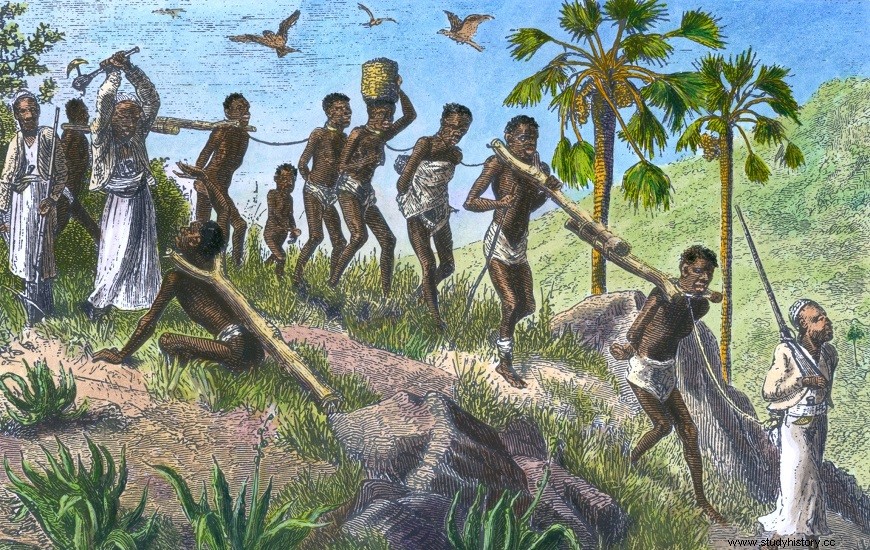
Delayed Abolition
It is never inappropriate to point out that Brazil was the last country on the American continent to abolish slavery. The Golden Law (Imperial Law n. 3,353), sanctioned on May 13, 1888, was an important gesture on the part of the Empire, but in addition to being a very time-consuming measure, it came unaccompanied by a new national project that would assimilate freed blacks into the activity economic and social sphere.
To make matters worse, the Republic, instituted through a military coup one year after abolition, it also did not present any state project that would integrate freed blacks into the new political-economic reality of the nation. But could it be that at some point in the history of Brazil, before the Lei Áurea, was there a state project that planned this transition?
Yes, and this project was presented by the statesman José Bonifácio de Andrada e Silva in the Constituent Assembly of 1823 .
José Bonifácio and the project of gradual extinction of slavery
José Bonifácio de Andrada e Silva (1763-1838) was one of the main “architects” of the Brazilian Empire , having worked since 1820 for Brazil to become independent and have a constitutional imperial regime, which occurred in 1822. With the advent of Independence, it remained for Brazil to conceive a Constitution to define which institutional structure would follow.
Bonifácio was the prime minister of Dom Pedro I when the first National Constituent Assembly was organized do Brasil, in 1823. It was at one of the meetings of the Constituent Assembly that he presented a Representation, followed by a Bill, which dealt with the gradual extinction of the slave regime in Brazil. In his representation, Bonifácio tried to convince the other parliamentarians – representatives of the rural aristocracy – of the economic and social benefits that the country would have if, progressively, blacks were freed and inserted into a free labor system.
Bonifácio's project had as main objectives:
-
End the slave trade in a maximum of five years;
-
Facilitate conditions for the purchase of manumission by slaves;
-
End corporal punishment;
-
Grant small strips of land so that freed blacks (through manumission or other means) could produce and prosper, etc.
In one of the excerpts of his representation, we can read the statesman's appeal:
If blacks are men like us, and do not form a species of brute animals; if they feel and think as we do, what picture of pain and misery do they not present to the imagination of any sensible and Christian man? If the groans of a brute pity us, it is impossible that we should not also feel a certain sympathetic pain with the misfortunes and miseries of slaves; but such is the effect of custom, and the voice of covetousness, that they see men shed tears for other men, without these squeezing a single drop of compassion and tenderness from their eyes. But greed does not feel or speak like reason and humanity.
Dissolution of the 1823 Constituent Assembly and the “pile-up” of the project
Bonifácio's project, however, was not approved for a very specific reason:the Constituent Assembly of 1823 was dissolved by Emperor D. Pedro I. Bonifácio, who protested against the measure, he was arrested and then exiled, only returning to the country years later, but without the strength and prestige he had before. His project fell into oblivion because, moreover, it did not arouse any sympathy in the rural slave aristocracy of Brazil at the time, above all because there was no full interest in a project of State or in a project of Nation.
In the decades that followed, the empire, before the Golden Law, only sanctioned laws under international pressure, mainly from the English, such as the Law Eusébio de Queirós , of 1850, which extinguished the transatlantic slave trade, the Free Womb Law , of 1871, which prevented children born to female slaves from also being slaves, and the Sexagenarian Law , of 1885, which freed all slaves over sixty years of age. Even so, these laws did not have the institutional support claimed by José Bonifácio in 1823.
Take the opportunity to check out our related video lesson:
